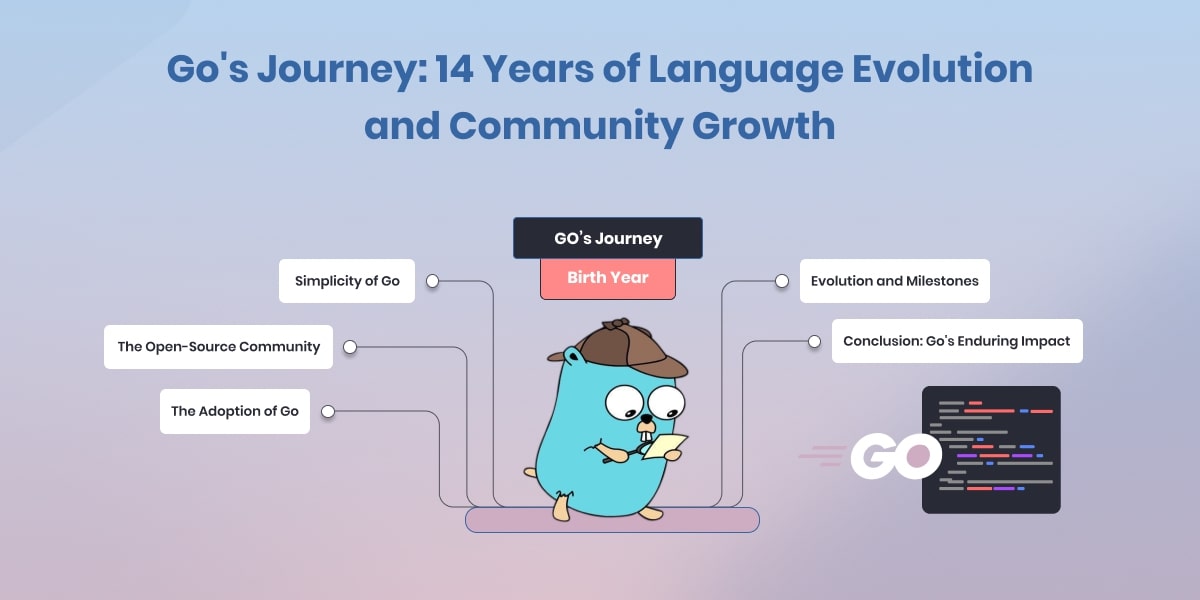How Golang HTML Templates Can Transform Your Web Projects

Web development is constantly evolving, with new tools and frameworks emerging to make the process more efficient and scalable. Among these, Golang (or Go), a statically typed, compiled programming language developed by Google, has gained immense popularity.
One of the most powerful features of Golang for web development is its HTML template package. This blog will explore how Golang HTML templates can transform your web projects, making them more dynamic, efficient, and easy to maintain.
What are Golang HTML Templates?
Golang HTML templates are a powerful feature of the Go programming language that allows developers to generate dynamic HTML content by embedding Go code within an HTML file. This approach enables the creation of web pages that can change based on data inputs, making your web applications more interactive and user-friendly.
The html/template package in Go provides a way to create templates that are safe to use for generating HTML output. This package is specifically designed to handle web content, ensuring that the templates are secure against injection attacks by escaping data appropriately.
Why Use Golang HTML Templates?
1. Simplified Dynamic Content Rendering:
Golang HTML templates make it easy to render dynamic content on your web pages. Whether you need to display user data, populate tables, or create forms that adapt based on user input, Go templates provide a straightforward way to inject dynamic data into static HTML.
2. Secure by Default:
One of the standout features of Go’s html/template package is its focus on security. The package automatically escapes input data, reducing the risk of Cross-Site Scripting (XSS) attacks. This built-in security feature makes it easier to manage user inputs without worrying about potential vulnerabilities.
3. Easy to Learn and Use:
For developers already familiar with Go, the learning curve for using Go templates is relatively low. The syntax is simple and integrates seamlessly with the Go language, making it easy to incorporate into existing projects.
4. High Performance:
Golang is known for its performance, and this extends to its template rendering capabilities. Go templates are compiled, which means they are parsed and processed quickly, leading to faster page loads and a more responsive user experience.
5. Flexibility and Control:
With Go templates, you have fine-grained control over the HTML output. You can conditionally render content, loop through data structures, and include other templates within a main template. This flexibility allows you to create complex layouts and designs while keeping your codebase organized.
Getting Started with Golang HTML Templates
To start using Golang HTML templates in your web projects, you need to import the html/template package and create your templates. Below is a step-by-step guide to help you get started.
Step 1: Setting Up Your Go Environment
Before you begin working with Go templates, ensure you have Go installed on your system. If you haven’t installed Go yet, you can download it from the official Go website.
Once installed, create a new directory for your project and navigate to it:
Step 2: Create a Basic Go Web Server
Start by creating a simple Go web server that can serve HTML content. Create a file named main.go and add the following code:
This code sets up a basic web server that listens on port 8080 and serves a home page using a template located in the templates directory.
Step 3: Create Your First Template
Next, create the templates directory and add a file named home.html:
This is a simple HTML file that the Go server will render when you visit the home page.
Step 4: Run Your Web Server
To see your template in action, run the web server using the following command:
Open your web browser and navigate to http://localhost:8080. You should see your HTML template rendered by the Go server.
Step 5: Passing Data to Templates
Golang HTML templates become truly powerful when you pass data to them. Modify your homePage function to pass a simple message to the template:
Update your home.html template to use the passed data:
When you refresh the page in your browser, you should see the title and message dynamically rendered from the Go code.
Step 6: Template Functions and Conditionals
Golang templates also support functions and conditionals, allowing you to create more dynamic and interactive content. Let’s add a simple conditional to your template.
Update the PageData struct and homePage function as follows:
Now, modify the home.html template to include a conditional statement:
With this setup, the template will display the message only if ShowMessage is true.
Step 7: Template Inheritance and Reuse
To keep your code DRY (Don’t Repeat Yourself), you can use template inheritance and reuse common template elements like headers and footers. This is done by defining base templates that other templates can extend.
Create a base template named base.html:
Now, update home.html to extend this base template:
In your Go code, modify the homePage function to parse both templates:
This approach allows you to reuse the base.html template across multiple pages, making your code more maintainable.
Step 8: Advanced Template Features
As you grow more comfortable with Golang HTML templates, you can start exploring advanced features such as:
Custom Functions: You can create custom functions to be used within templates for tasks like formatting dates, manipulating strings, or performing calculations.
Template Caching: To improve performance, especially for large projects, you can cache templates to avoid recompiling them on every request.
- Template Parsing from Strings: Instead of parsing templates from files, you can also define and parse them from strings, which is useful in certain dynamic scenarios.
Step 9: Deploying Your Web Project
Once your web project is complete, deploying it involves transferring the compiled Go binary and associated templates to a server. Go’s compiled binaries are self-contained, making deployment straightforward and efficient.
Hosting: You can deploy your Go application on various hosting platforms like AWS, Google Cloud, DigitalOcean, or even simpler services like Heroku.
Server Setup: Ensure your server is configured to handle incoming HTTP requests, serve static assets (if any), and manage logs and errors.
For more information on deploying Go applications, refer to the official Golang documentation.
Integrating UniDoc Libraries with Golang
If your web project involves document processing or PDF generation, you might want to integrate solutions like UniDoc’s UniOffice or UniPDF libraries into your Golang application. UniDoc offers robust document management capabilities that complement Go’s server-side efficiency.
- PDF Generation: UniDoc allows you to generate, manipulate, and process PDFs through its UniPDF library, directly from your Go application. Discover more about our comprehensive PDF solutions by exploring the UniPDF library at UniDoc.
- Document Redaction: If your project requires redaction of sensitive information from documents, UniDoc provides a reliable library “UniPDF” for this purpose.
Conclusion:
Golang HTML templates offer a powerful and flexible way to create dynamic, secure, and efficient web applications. By using Go’s built-in templating features, you can build web projects that are not only high-performing but also easy to maintain and scale.


